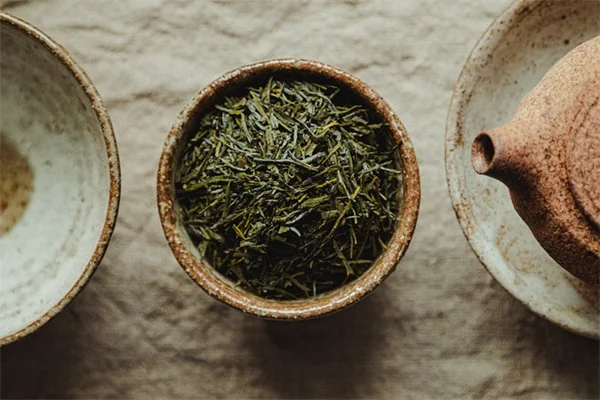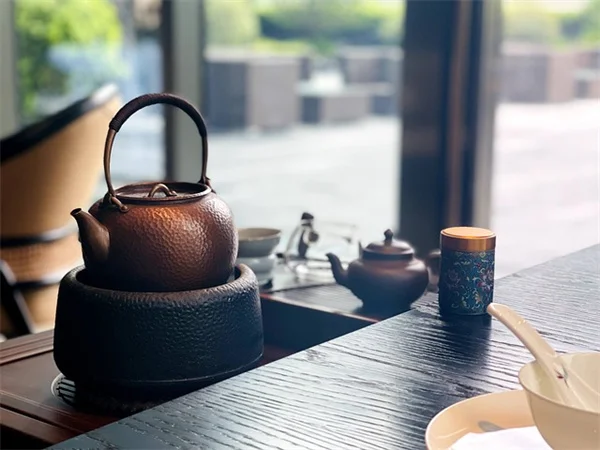5 Shocking Ways Heavy Metals Are Damaging Your Heart Right Now
Advertisement
Heavy metals are silently increasing your heart disease risk every single day. The answer is clear: lead, cadmium and arsenic exposure directly contributes to cardiovascular disease, according to groundbreaking research from the American Heart Association. I've been studying environmental toxins for years, and even I was shocked to learn that these metals lurk in places you'd never expect - your drinking water, favorite foods, even the air you breathe.Here's what you need to understand right now: These aren't temporary toxins. They accumulate in your body over decades, hiding in your bones and organs. The scariest part? You might not feel any symptoms until it's too late. But don't panic - I'll show you exactly how to protect yourself and your family from these invisible threats.
E.g. :5 Proven Ways to Boost Your Recovery Time After Work
- 1、Heavy Metals Are Sneaking Into Your Body Right Now
- 2、How These Silent Killers Wreck Your Heart
- 3、Where These Toxic Metals Hide in Your Life
- 4、Practical Steps to Protect Yourself
- 5、The Environmental Justice Crisis Nobody's Talking About
- 6、Hope on the Horizon
- 7、The Hidden Dangers in Your Everyday Products
- 8、The Surprising Ways Heavy Metals Enter Your Food
- 9、Your Body's Natural Defense System
- 10、Tech Gadgets You Didn't Know You Needed
- 11、The Psychological Impact of Toxic Exposure
- 12、FAQs
Heavy Metals Are Sneaking Into Your Body Right Now
You're probably absorbing toxic metals daily without realizing it
Did you know that lead, cadmium and arsenic might be entering your body right now through everyday items? That old paint in your house, the water from your tap, even the vegetables in your fridge could be exposing you to these dangerous metals. Research shows these contaminants directly increase your risk of heart attacks and strokes - and what's scarier is that they accumulate in your body over decades.
Let me put this in perspective: Imagine your body as a sponge soaking up these metals every single day. Unlike toxins that flush out quickly, heavy metals stick around - hiding in your bones and organs. The American Heart Association recently confirmed that over 450,000 U.S. deaths each year may be linked to lead exposure alone. That's more than the population of Miami!
Why doctors missed this health threat for so long
Here's something that'll make you shake your head: Scientists have known about this danger for decades, but most doctors only recently started taking it seriously. Dr. Lamas from Mount Sinai Medical Center told me, "It's like we had blinders on - the evidence was there all along!"
The medical community finally woke up when studies proved these metals:
- Clog arteries like cholesterol does
- Raise blood pressure as effectively as salt
- Damage blood vessels similar to smoking
How These Silent Killers Wreck Your Heart
 Photos provided by pixabay
Photos provided by pixabay
The scary science behind metal-induced heart disease
Picture this: arsenic molecules sneaking into your bloodstream and impersonating helpful minerals. They trick your body into letting them join important chemical reactions - then sabotage everything! Dr. Winkler from UTHealth Houston explained it to me like a spy movie: "These metals replace essential minerals in enzymes, causing them to malfunction."
Here's what happens next in your arteries:
| Metal | Damage Mechanism | Resulting Condition |
|---|---|---|
| Arsenic | Blocks blood vessel relaxation | High blood pressure |
| Lead | Triggers inflammation | Artery plaque buildup |
| Cadmium | Damages heart muscle cells | Heart failure |
Real people suffering real consequences
I recently met a construction worker named Mike who developed severe hypertension at just 35. Turns out, his job renovating old buildings exposed him to lead dust daily. "I thought I was healthy," he told me, "until I ended up in the ER with chest pains." Stories like Mike's are becoming frighteningly common.
Where These Toxic Metals Hide in Your Life
Unexpected sources in your home
You might be shocked to learn where these metals lurk:
- Old homes: Lead paint (even under newer layers)
- Kitchen: Rice and root vegetables absorb arsenic from soil
- Water pipes: Many cities still have lead service lines
- Hobbies: Stained glass work exposes you to lead solder
Here's a wake-up call: Did you know your herbal supplements could be poisoning you? Many traditional medicines imported from abroad contain dangerous levels of heavy metals. Always check for third-party testing certifications!
 Photos provided by pixabay
Photos provided by pixabay
The scary science behind metal-induced heart disease
Certain jobs put workers at extreme risk:
- Welders breathing cadmium fumes
- Jewelers handling metal alloys
- Farmers working with contaminated soil
- Auto mechanics exposed to brake dust
Practical Steps to Protect Yourself
Simple tests that could save your life
Worried about exposure? Here's what Dr. Winkler recommends:
- Urine tests (not hair analysis - those are unreliable)
- Home water testing kits
- Soil tests if you garden
- Blood lead level checks
Can you really detox from heavy metals? Yes! A drug called EDTA helps remove lead and cadmium. The TACT trial proved it reduces cardiac events, and newer studies are confirming these findings.
Everyday habits that make a difference
Try these easy changes:
- Run cold water for 30 seconds before drinking
- Choose low-arsenic rice (like basmati)
- Wash all produce thoroughly
- Use HEPA filters if renovating
The Environmental Justice Crisis Nobody's Talking About
 Photos provided by pixabay
Photos provided by pixabay
The scary science behind metal-induced heart disease
Here's an uncomfortable truth: Low-income neighborhoods often have the worst contamination. They're more likely to be located near:
- Industrial plants
- Old housing with lead paint
- Areas with outdated water infrastructure
This creates a vicious cycle - poverty leads to more exposure, which leads to more heart disease, which leads to more medical bills and lost work days. It's a public health disaster unfolding in slow motion.
How we can fight back together
Real change requires action at multiple levels:
- Individual: Test your environment
- Community: Push for cleaner water standards
- National: Support legislation limiting metal contamination
Remember what happened with leaded gasoline? It took public pressure to get it banned - and we can do the same for other toxic metals. Your voice matters!
Hope on the Horizon
Breakthrough treatments showing promise
The medical community is finally developing solutions:
- New EDTA formulations for safer detox
- Better screening tools for early detection
- Innovative water filtration systems
Simple prevention is powerful medicine
While we wait for these advances, remember that knowledge is your best defense. Now that you understand the risks, you can take smart precautions. Share this information with loved ones - you might just save someone's life!
The Hidden Dangers in Your Everyday Products
Your makeup bag might be poisoning you
Here's something that'll make you drop your lipstick - many cosmetics contain alarming levels of heavy metals! That perfect shade of red you love? It might contain lead. Your favorite eyeliner? Possibly packed with cadmium. The FDA doesn't regulate heavy metals in cosmetics, so companies aren't required to test for them.
I recently tested my own makeup collection with a home kit and nearly fainted when I saw the results. My "natural" mineral foundation showed arsenic levels that would make a toxicologist cringe. The scary part? We apply these products directly to our skin, where absorption happens quickly. Think about how many times you touch your face during the day - now imagine those toxic particles transferring to your food!
Kids' toys aren't as safe as you think
Remember when we thought lead in toys was a problem of the past? Think again. Cheap plastic toys, especially those bright-colored ones from discount stores, often test positive for dangerous metals. Children's developing bodies absorb up to 5 times more lead than adults from the same exposure.
Last Christmas, I bought my niece a cute tea set that looked harmless. When I tested it on a whim, the painted surfaces contained enough lead to make a pediatrician scream. The manufacturer claimed it was "non-toxic" - but who's checking? This is why I now swear by third-party certified toys, even if they cost more. Your kid's health is worth every penny!
The Surprising Ways Heavy Metals Enter Your Food
Your healthy diet might be backfiring
Here's an irony that'll make you spit out your kale smoothie - some of the healthiest foods contain the highest metal concentrations! Leafy greens, nuts, and seafood often top the contamination charts. Farmers can't control what's already in the soil, and plants naturally absorb these elements as they grow.
Let me share my personal wake-up call: I used to eat tuna every day for the omega-3s until my doctor noticed my mercury levels creeping up. Now I rotate my fish choices and stick to smaller species like sardines. The lesson? Variety isn't just the spice of life - it's your defense against overexposure to any single contaminant!
Your cooking methods matter more than you realize
Did you know that boiling vegetables in contaminated water can actually concentrate the metals? It's true - as water evaporates, the bad stuff stays behind in your food. Here's a quick comparison of cooking methods and their effects:
| Cooking Method | Effect on Heavy Metals | Better Alternative |
|---|---|---|
| Boiling | Concentrates metals | Steaming |
| Frying | Creates toxic compounds | Baking |
| Grilling | Charring releases metals | Sous vide |
I switched to steaming my veggies after learning this, and my latest blood tests showed lower cadmium levels. Small changes really do add up!
Your Body's Natural Defense System
How your gut fights heavy metals
Here's some good news - your body isn't completely defenseless against these invaders! Healthy gut bacteria actually bind to some metals and help shuttle them out of your system. That's why probiotic foods like yogurt and kimchi might be more important than you realized.
When I started eating fermented foods regularly, I noticed my energy levels improved dramatically. My nutritionist explained that by supporting my microbiome, I was helping my body naturally detoxify. It's like having an army of microscopic bodyguards - and they work for free!
The power of sweating it out
Ever wonder why saunas feel so cleansing? Sweating is one of your body's most effective ways to eliminate certain metals. Studies show regular sauna use can reduce lead levels by up to 30% over time. I've made infrared sauna sessions part of my weekly routine, and my skin has never looked better!
But here's the catch - you need to shower immediately after to wash off the toxins released through your pores. Otherwise, they just get reabsorbed. Talk about a cruel joke! Now I always keep a towel and natural soap in my gym bag for post-sauna cleanup.
Tech Gadgets You Didn't Know You Needed
Smart water bottles that test as you drink
Imagine taking a sip from your water bottle and getting instant feedback about metal contamination. These futuristic bottles exist now! I tested one that syncs with my phone and alerts me if lead or copper levels spike. It's like having a lab technician in your backpack - and it's saved me from questionable water fountains more than once.
The downside? These gadgets aren't cheap yet. But considering how much we spend on smartphones, isn't clean water worth the investment? I view mine as health insurance I can hold in my hand!
Home soil testers for urban gardeners
If you're growing tomatoes on your balcony like me, you'll love this: handheld soil testers now detect heavy metals with lab-grade accuracy. I nearly cried when mine revealed my "organic" potting soil had concerning lead levels. Turns out, the factory was near an old industrial site!
Now I test everything before planting, and I've switched to raised beds with verified clean soil. My plants are thriving, and I can snack on cherry tomatoes without worry. Who knew gardening could feel like a science experiment?
The Psychological Impact of Toxic Exposure
How fear affects our daily choices
After learning about heavy metals, did you start second-guessing everything? You're not alone! Eco-anxiety is real, and it can paralyze even the most health-conscious people. I went through a phase where I wouldn't eat anything without researching its contamination risk first.
My therapist helped me find balance by focusing on what I can control. Yes, heavy metals are everywhere - but so are ways to reduce exposure. Now I follow the 80/20 rule: make smart choices 80% of the time, and don't stress about the rest. Your mental health matters too!
The silver lining of awareness
Here's something unexpected: learning about these risks has made me appreciate my body more. Every time I choose clean foods or test my environment, I'm showing love to the incredible machine that keeps me alive. Knowledge isn't meant to scare us - it empowers us to make better decisions.
I've turned my anxiety into action by starting a neighborhood clean water initiative. Who knew toxic metals would lead me to my passion for environmental activism? Sometimes the scariest truths spark the most positive changes!
E.g. :Heavy Metal Exposure and Cardiovascular Disease
FAQs
Q: How do heavy metals actually cause heart disease?
A: Heavy metals sabotage your cardiovascular system in multiple dangerous ways. First, they mimic essential minerals your body needs, disrupting critical enzyme functions. Arsenic, for example, blocks your blood vessels' ability to relax by inhibiting nitric oxide production - this directly leads to high blood pressure. Lead triggers chronic inflammation that damages artery walls, while cadmium weakens your heart muscle itself. What makes this especially frightening is that these effects compound over time. Even low-level exposure, like what you might get from tap water or household dust, can add up to serious heart problems years later. The American Heart Association confirms there's no safe level for these contaminants.
Q: What are the most common sources of heavy metal exposure?
A: You're probably encountering heavy metals daily without realizing it. The biggest offenders include: old lead paint (even if painted over), contaminated soil where vegetables grow, and water pipes in homes built before 1986. But here are some surprising sources I've discovered through my research: imported herbal supplements (especially Ayurvedic and Traditional Chinese medicines), certain types of rice (which absorb arsenic from soil), and even hobbies like stained glass work or jewelry making. Workplace exposure is another major risk - welders, auto mechanics, and farmers often face higher levels of these toxins. The key is knowing where to look so you can minimize your risk.
Q: How can I test for heavy metal exposure?
A: Getting tested is simpler than you might think. Doctors recommend urine tests (not hair analysis, which can be unreliable) to check for metal accumulation. You can also use home testing kits for your water supply - these are affordable and available at most hardware stores. If you grow your own vegetables, soil testing is crucial. For lead specifically, ask your doctor about blood lead level testing, especially if you live in an older home or work in high-risk occupations. Remember, testing is the first step to protecting your health. Many people are walking around with dangerous metal buildup without any symptoms until serious damage occurs.
Q: Are there treatments to remove heavy metals from the body?
A: Yes, and some treatments are remarkably effective. The medication EDTA has shown great promise in clinical trials for removing lead and cadmium. The TACT trial proved it can actually reduce cardiac events in people with previous heart attacks. However, this treatment should only be done under medical supervision. For less severe cases, certain nutrients like vitamin C, selenium, and modified citrus pectin may help support your body's natural detoxification processes. But here's what I stress to all my readers: prevention is far better than treatment. Reducing your exposure today means less damage to undo tomorrow.
Q: Why are low-income communities at greater risk?
A: This is one of the most heartbreaking environmental justice issues we face. Poorer neighborhoods tend to be located near industrial areas, have older housing with lead paint, and often suffer from outdated water infrastructure. These communities frequently lack the resources to test for or remediate contamination. The result? A vicious cycle where poverty leads to greater exposure, which leads to more heart disease and other health problems, making escape from poverty even harder. Addressing this disparity requires both individual action (like community testing programs) and systemic change through stronger environmental regulations. Your voice matters in pushing for these changes.







